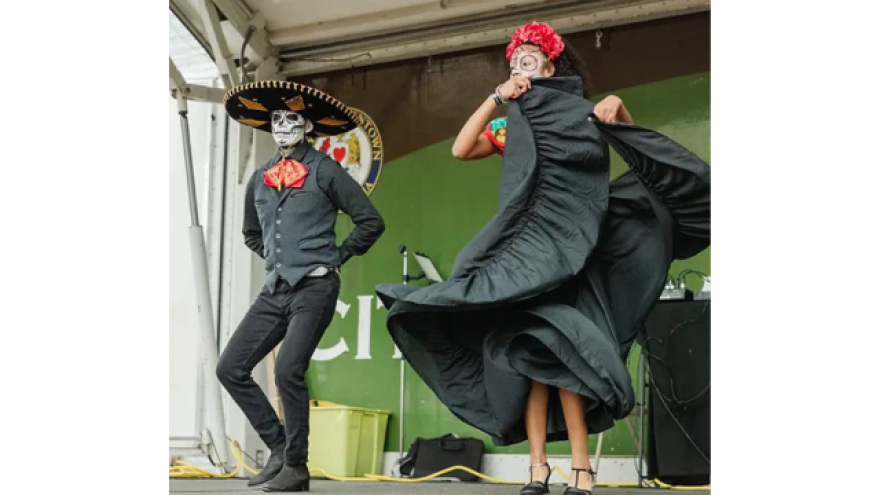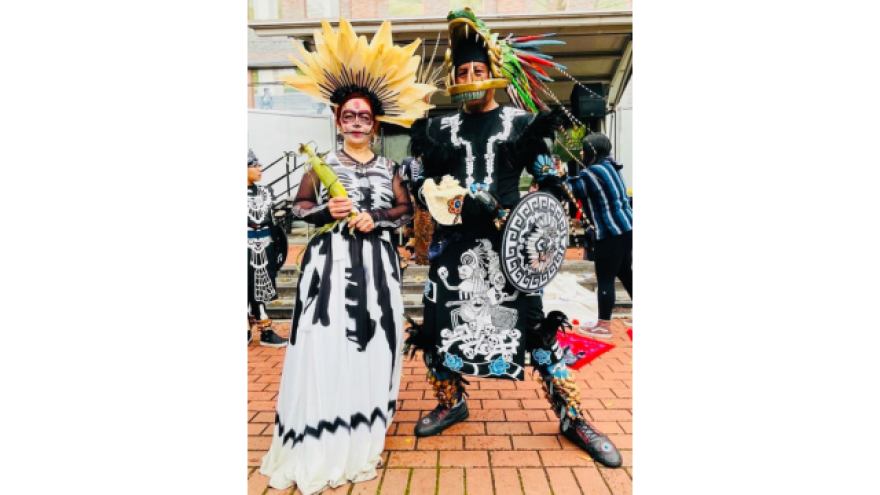ALLENTOWN, Pa. — Inside her home, Hilda Gonzalez's ofrenda will be filled with photos of her deceased loved ones, lighted candles, food and cempasúchil, or marigolds.
The sweet-smelling flowers placed on the ofrenda, or offering altar, are a big part of the Día de los Muertos celebration and thought to attract the souls of the deceased.
Gonzalez, who hails from is Monterrey, Mexico, will share the rituals of the Mexican holiday during the Día de los Muertos festival at Arts Park (24-32North 5th St.) from 1 to 5 p.m. Sunday, Oct. 27.
The celebration is organized by Interlace Cultural y Desarrollo Integral de Lehigh Valley, or ICDI, in partnership with the City of Allentown and Baum Art School.
Gonzalez founded ICDI in 2017 to raise cultural awareness and honor her heritage.

Along with the Día de los Muertos celebration, ICDI holds events for Cinco de Mayo in May and for Mexico's Independence Day, or Grito de Independencia, in September.
Now in its seventh year, the Día de los Muertos event will feature Aztec and traditional folk dancing, mariachi singers and Mexican eats.
A 'celebration of life'
Although the holiday is often associated with Halloween, there is nothing spooky about it, Gonzalez said.
"Día de los Muertos is a celebration of life and has a very spiritual meaning. It is about remembering our loved ones."Hilda Gonzalez
"Día de los Muertos is a celebration of life and has a very spiritual meaning. It is about remembering our loved ones," she said.
"The message is that nobody dies until you forget that person. If you don't forget that person, that person is with you and is going to be with you always in your heart, in your mind."
In Mexico, Día de los Muertos typically begins on Oct. 28 and spans several days of posthumous tributes and family gatherings.
Traditions include ofrenda altar building, visiting and decorating the graves of loved ones, taking part in parades and face painting — painted skulls, or calaveras, are meant to represent a loved one that passed.
Bright-colored skulls made out of sugar and chocolate are also placed on the ofrendas' altars.
Día de los Muertos has great significance to Mexico's indigenous people, specifically the Aztec, Mayan and Olmec tribes.
"They had been celebrating Día de los Muertos long before the Spanish conquistadors came to Mexico," Gonzalez said.
The Spanish religious beliefs fused with the Día de los Muertos celebrations, which coincides with Día de todos los Santos, or All Saint's Day, on Nov. 1, a holy day of obligation for Catholics, and Día de los Fieles Difuntos, or All Souls' Day, which occurs on Nov. 2.
During the Día de los Muertos celebration, each day is meant to represent a different loved one who departed.
For example, on Día de todos los Santos, families honor children who have died.
Aztec dancing, mariachi ballads
A big part of Sunday's festivities will include traditional Mexican dance and songs.
Scheduled to perform are Danza Azteca del Anahuac, a group based in Philadelphia and that consists of 15 dancers.
There also will be performances by Easton-based mariachi singer Mariangel Vargas, local dance groups, Ely Dance and Sin Fronteres and students from the Spanish Immersion Learning Center.
Attendees are encouraged to wear "La Catrina" attire, which may include skull makeup, head crowns and bright, long dresses.

Along with traditional Mexican food, vendors will sell arts and crafts inspired by the Día de los Muertos celebration and Mexican heritage.
For those wishing to honor the departed, there will be an ofrenda altar set up outside Arts Park where attendees can leave photos, flowers, candles and other mementos.
There also will be an ofrenda inside the Baum School of Art (510 Linden St.) that will be open to the public during the celebration.
The Baum School's ofrenda is part of the exhibition, "Remembranza" on view through Nov. 6.
"It's an important celebration, not just a Mexican one because we have all suffered the loss of a loved one. To me, the event is about healing."Hilda Gonzalez
The exhibit explores themes of loss as individuals and as communities and features the work of five Latino artists: Arta Brito, Suzanne Gonsalez-Smith, Diane Kahlo, Cristina Arancibia Brecht and Betsy Casañas.
Gonzalez said she feels proud to share her heritage with the community.
"I am happy because over the years people have told me they now have ofrendas in their house. That makes me feel as if we're doing a good job sharing the message," she said.
"It's an honor to celebrate the tradition of Día de los Muertos in this country, especially where I live.
"It's an important celebration, not just a Mexican one because we have all suffered the loss of a loved one. To me, the event is about healing."


